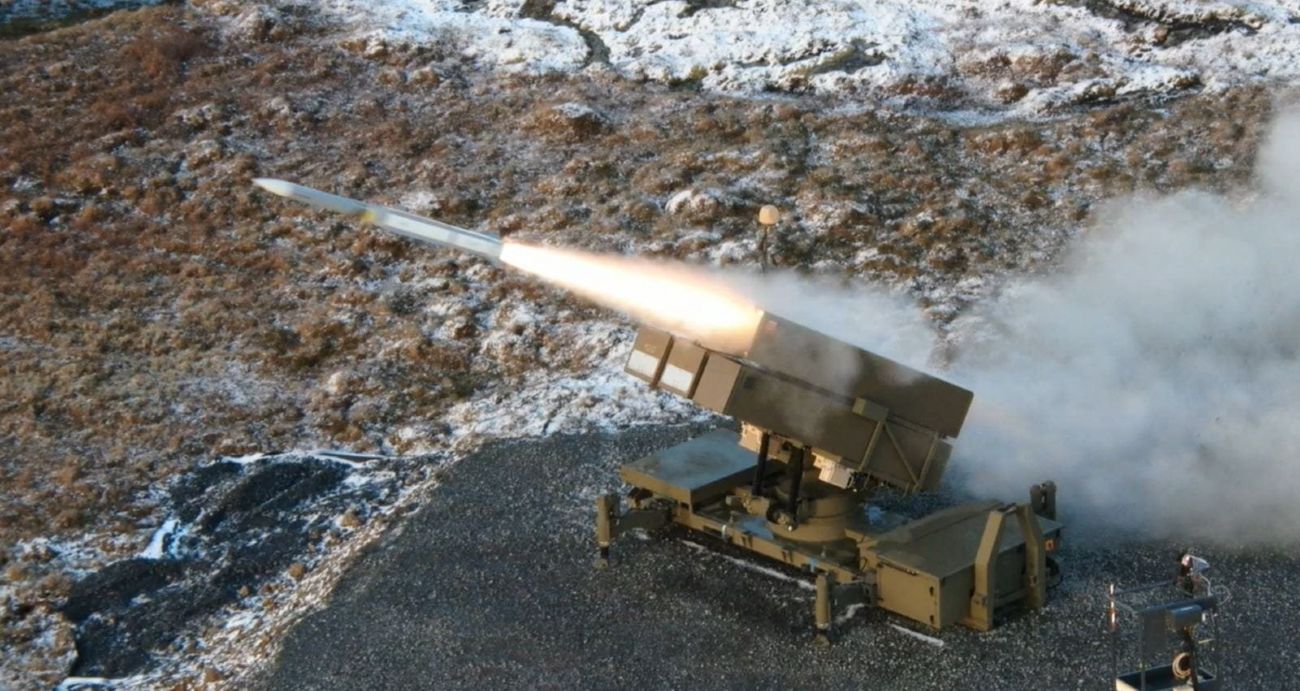France has announced new military assistance for Ukraine, including two batteries of the air defense system. The decision comes as pressure is mounting on NATO countries to bolster Kyiv’s resistance against Russian missiles.
French Defense Minister Sebastian Lecornu informed a French publication Le Journal du Dimanche, that France sent two Crotale air defense systems and multiple launch rocket systems to Ukraine.
The French air defense system will join the German IRIS-T and American NASAMS already in service with the Armed Forces of Ukraine (AFU).
The announcement of the transfer of Crotale air defense systems to Ukraine occurred when a stray Ukrainian missile fired reportedly from the S-300 air defense system struck Poland and killed two people.
The missile, initially believed to be fired by Russia, triggered concerns about the conflict spilling over to the neighboring NATO countries.
An emergency NATO meeting called in the aftermath of the incident discussed the need to bolster Ukraine’s air defense capabilities by transferring cutting-edge systems. The Crotale is, thus, one step in that direction.
#France gave us the Crotale air defense system. It is definitely needed here and right now. Thank you! ??????
We are waiting for similar videos from #Ukraine #RussiaIsATerroristState #UkraineRussianWar #UkraineWillWin #SlavaUkraini #SlavaUkraïni pic.twitter.com/53pGP8Bzjc— Feher_Junior (@Feher_Junior) November 20, 2022
Earlier in October, as Russia began its biggest-ever aerial bombardment of Ukraine’s cities, French President Emmanuel Macron had said that his country would supply air defense systems and radars to Ukraine in the coming weeks.
However, the President did not specify which system would be given to Ukraine at the time.
“This is a new phase of bombing coming from land, sea, air, and drones against essential infrastructure and civilians,” Macron said, adding that radar and anti-air missiles would be delivered in the coming weeks to “protect the country from drone and missile attacks.”
Germany was one of the first countries to deliver an air defense system to Ukraine. Shortly after Russia’s aerial attacks began full swing, Germany delivered its IRIS-T air defense system to Ukraine.
Ukrainian officials have lauded the performance of IRIS-T, with reports stating that these missiles hunt down nine out of ten incoming hostile missiles.

Besides IRIS-T, another western air defense system operational in Ukraine is the US-supplied National Advanced Surface-to-Air Missile System.
According to a statement made by US Defense Secretary Lloyd Austin, the system had a 100% success rate in Ukraine thwarting Russian attacks. However, Ukraine has received just two of the eight NASAMS promised by the US.
Ukrainian President Volodymyr Zelensky has been calling on the NATO countries to supply their best air defense systems as Russian missile attacks are hell-bent on destroying the energy infrastructure in his country.
To that end, the French Crotale is a significant addition. However, we examine how the system fairs against its German counterpart IRIS-Ts.
How Does Crotale Fair Against IRIS-T?
Thomson CSF Matra (now Thales Group) especially developed the Crotale air defense system in the early 1960s for the South African army. These complexes are used in France on fleet ships and ground-based self-propelled units, and several upgraded variants have been produced over the years.
Crotale NG, potentially the variant transferred to Kyiv, has the new VT-1 missile, which has a speed of up to Mach 3.5, a flight range of up to 11 kilometers, and is equipped with a warhead weighing 13 kilograms.
For precision, the system has a new S-band pulsed Doppler radar with a range of up to 20 kilometers, Ku-band tracking radar with a range of up to 30 kilometers, and a thermal imaging camera and a day camera.
MERCI, PARIS: The French Crotale air defense system allows UKR to detect air threats with an S-band Pulse Doppler radar at 20 km, a Ku-band TWT tracking radar at 30 km, with its thermal camera at 9 km, and a daylight CCD camera at 15 km, it uses an IR localizer to direct fire. pic.twitter.com/mIy0DH1f8W
— Chuck Pfarrer | Indications & Warnings | (@ChuckPfarrer) November 20, 2022
In contrast to the capabilities of the Crotale, the German IRIS-T, the newest air defense system in Germany yet to be inducted by its military, has a range of about 40 kilometers and can reach an altitude of about 20 kilometers.
A missile launcher, radar, and fire-control radar are the three units that make up each system, together with integrated logistics and support.
In addition, IRIS-T missiles are fitted with a 250-kilometer-range radar (155 miles). The missiles can be launched in all directions around the launcher, making them very maneuverable and covering a large area at once.

The Crotale is a point defense system developed to safeguard high-value targets like airports, military installations, ammo storage facilities, and other locations.
This makes it similar to the NASAMS, which also caters to point defense and protects high-value targets, like the White House in Washington, instead of providing area defense.
Meanwhile, the IRIS-T provides medium-range, high-altitude cover for small cities and armies.
The manufacturer of IRIS-T, Diehl, claims that the system is most effective when used in conjunction with other “layered air defense” systems, such as the Patriot PAC-3 missile defense system, which is produced in the US and has a higher maximum altitude.
Ukraine has been requesting the US to send Patriot missile systems to counter the Russian offensive.
![Oryx on Twitter: "Arms For #Ukraine: French Weapons Deliveries To Kyiv ???? Updated with: - Crotale NG SAM Systems [TBD] Full list: https://t.co/SYe4RrhMUq https://t.co/W0LRllt390" / Twitter](https://pbs.twimg.com/media/Fe5hxv6XoAE3JX0.jpg:large)
Crotale was initially intended to engage supersonic low-flying aircraft. While it can shoot down any incoming projectile, Russian warplanes flying low would have to be extra careful when Crotale becomes operational in Ukraine.
The Ukrainian Armed Forces have obliterated several Russian warplanes by forcing them to fly at low altitudes.
That being said, since the Crotale is more suited for point defense, it could protect specific high-value military targets and energy infrastructure by thwarting Russian missiles and kamikaze drones.
- Contact the author at sakshi.tiwari9555 (at) gmail.com
- Follow EurAsian Times on Google News




